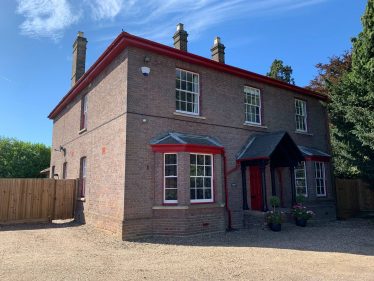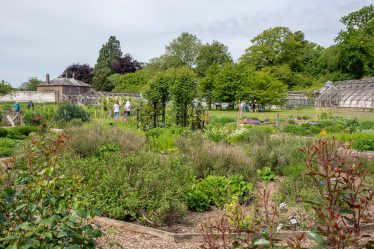During World War Two, food shortage became a problem for the British population, as most of the men working the lands left for joining the services. Luton Hoo had been one of the estates that offered accommodation and training to the “Land Girls” who worked in either agriculture, forage or timber cutting.
The Women’s Land Army
“The help of British women is urgent and indispensable.” These were the words on a First World War Women’s Land Army recruitment poster, encouraging women to work on the land to replace the 100,000 men who had gone to war.
Despite the misleading title of “The Women’s Land Army”, this organisation was made up of young female civilians, commonly known as “Land Girls”, who worked in either agriculture, forage (haymaking for food for horses) or timber cutting.
1939 saw fears of food shortages due to men leaving the land to join the services in World War Two and attacks by German U boats threatened the import of food. Rationing was introduced and every able-bodied person was used for food production. The Women’s Land Army that had been training and working in and around Hertfordshire in the First World War reformed and began to recruit and train girls of between 17 and 30 years old. Luton Hoo had been one of the estates that offered accommodation and training in World War One and it reopened to accommodate the Women’s Land Army in World War Two.
Working at the Luton Hoo
After an initial offer of rooms in two unfurnished cottages on the estate, the Bothy was used for the accommodation of between 16 and 20 girls. This had been inspected and found to be acceptable. A list of rules was drawn up and leaders were selected from the trainee Land Army girls.
The Bothy was classified as a commercial rather than a residential building, enabling Luton Hoo to claim extra cheese rations and a fishing permit to benefit the girls. A housekeeper was employed to undertake supervision and cooking for ‘a training establishment for Women’s Land Army workers’ in the Garden Bothy. The girls would arrive and bring a National Health card, Unemployment card and a Ration Book – and so their interesting and adventurous lives at Luton Hoo would begin!
The Bothy is still at Luton Hoo Estate, just outside the Walled Garden’s walls, although it is now a private residence. The Walled Garden is open to the public from the first Wednesday in May to the last in September, with events and open days throughout the year. The Walled Garden volunteer project continues to ensure the history of the Walled Garden’s Land Girls and the wider history of the estate and garden is diligently researched and updated.
There are various opportunities to attend tours and talks at Luton Hoo Estate and hear more about the many incarnations of the Walled Garden, together with the experiences of those whose lives have been intertwined with and effected by their connection with it. Perhaps you have a relative who has their own experience of Luton Hoo and the Walled Garden? If so, please contact office@lutonhooestate.co.uk and we will be in touch.
Go to our website: www.lutonhooestate.co.uk to keep up to date, book tickets and hear about the latest events and follow us on Facebook, Twitter and Instagram.









No Comments
Add a comment about this page